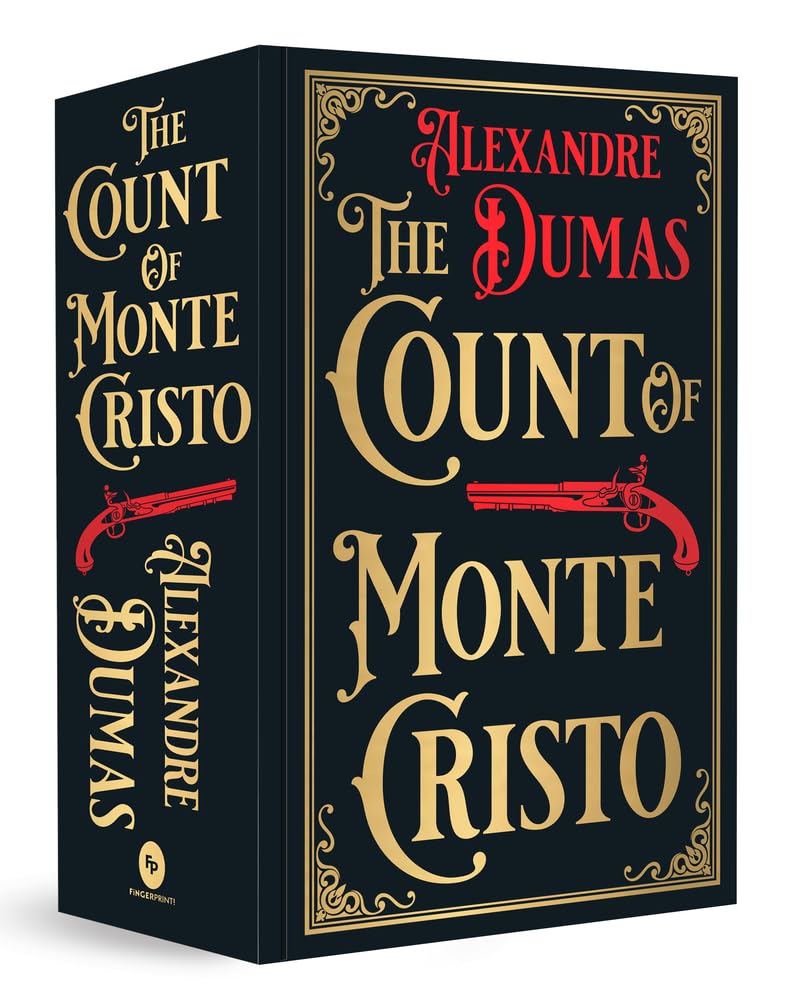The Count Of Monte Cristo: A Detailed Review Of The Classic Novel

Table of Contents
A Compelling Plot Driven by Betrayal and Revenge
The narrative of The Count of Monte Cristo hinges on a devastating betrayal. Edmond Dantès, on the cusp of happiness with his beloved Mercedes, is falsely accused of treason by Fernand Mondego (driven by jealousy), Danglars (fueled by ambition), and Villefort (motivated by self-preservation). This wrongful accusation leads to his imprisonment in the infamous Chateau d'If, a chilling prison off the coast of Marseille. This initial betrayal sets the stage for a meticulously crafted tale of revenge.
The plot unfolds with dramatic intensity. Edmond's escape from prison, aided by the wise Abbé Faria, marks a turning point. He discovers the location of a hidden treasure on the island of Monte Cristo, transforming him from an unjustly imprisoned sailor into the wealthy and influential Count of Monte Cristo. With his newfound fortune and cunning intellect, he embarks on a systematic dismantling of his enemies, orchestrating their downfall with precision and calculated cruelty. This detailed plan for revenge forms the backbone of the novel, exploring the complex themes of justice and the consequences of betrayal.
- The betrayal by Fernand Mondego, Danglars, and Villefort. Their motivations are distinct, reflecting the novel's exploration of human ambition and greed.
- Edmond's imprisonment in the Chateau d'If. This period of confinement shapes his character and fuels his desire for revenge.
- His mentorship by Abbé Faria and the discovery of Monte Cristo's treasure. This pivotal moment provides Edmond with the means to enact his plan for revenge.
- The systematic dismantling of his enemies. The Count's actions are often brutal but serve as a reflection of the injustice he suffered.
- The exploration of themes of justice and revenge. The novel raises questions about the morality of revenge and the nature of justice itself.
Unforgettable Characters and Their Motivations
The Count of Monte Cristo boasts a memorable cast of characters, each with their own compelling motivations and flaws. Edmond Dantès's transformation from an innocent, hopeful young man to the calculating and vengeful Count is central to the narrative. His journey is one of profound loss and eventual, albeit complex, redemption.
Mercedes, Edmond's beloved, plays a crucial role, representing lost love and the devastating impact of betrayal. Fernand Mondego, Danglars, and Villefort represent different facets of human wickedness—jealousy, greed, and self-preservation, respectively. Their actions are not only driven by their personal ambitions but also by the societal pressures and corruption prevalent in 19th-century France. Haydée, a captivating character with a tragic backstory, offers a compelling counterpoint to the tale of revenge, embodying loyalty and resilience.
- Edmond's journey from innocent youth to calculating Count. This transformation is a key element of the novel's psychological depth.
- Mercedes's role and her relationship with Edmond. Their complex relationship underscores the themes of love, loss, and forgiveness.
- The ambition and greed of Fernand and Danglars. Their relentless pursuit of power and wealth highlights the corrupting influence of ambition.
- Villefort's moral ambiguity and fear of exposure. He represents the fragility of morality and the consequences of concealing wrongdoing.
- Haydée's backstory and her loyalty to the Count. Her character adds a layer of complexity to the story and challenges the simplistic notion of good versus evil.
Exploring Key Themes in The Count of Monte Cristo
Dumas's novel is rich with thematic depth, exploring timeless issues that continue to resonate with readers today. Revenge, a central motif, is presented with moral ambiguity. While Edmond's actions are understandable given the injustice he suffered, the novel also shows the devastating consequences of a life consumed by vengeance. The novel explores the complexities of justice, contrasting the official legal system with Edmond's own brand of retribution.
Betrayal, ambition, and redemption are interwoven throughout the narrative. The corrupting influence of ambition is evident in the actions of Fernand, Danglars, and even Villefort. However, the possibility of redemption is also explored, particularly through Edmond's eventual reconciliation with certain characters and his attempts to find peace. The novel beautifully portrays love, loss, and loyalty, showcasing the strength and fragility of human relationships in the face of adversity.
- The moral ambiguity of revenge and its consequences. The novel doesn't offer simple answers, forcing readers to consider the moral implications of Edmond's actions.
- The complexities of justice and the law. The novel highlights the flaws and failures of the legal system and the pursuit of justice outside of established institutions.
- The corrupting influence of ambition and greed. The characters' relentless pursuit of power and wealth leads to devastating consequences.
- The possibility of redemption and forgiveness. Despite the acts of revenge, the novel explores the possibility of personal growth and forgiveness.
- The exploration of love, loss, and loyalty. The emotional core of the novel lies in the complex relationships between the characters.
The Enduring Legacy of The Count of Monte Cristo
The Count of Monte Cristo remains incredibly popular, having captivated readers for generations. Its influence on subsequent literature and film is undeniable. Numerous adaptations, translations, and references demonstrate its enduring cultural impact. The novel's timeless themes of revenge, justice, and the human condition continue to resonate with audiences worldwide, solidifying its position as a classic of adventure and revenge literature.
- Numerous film and television adaptations. The story has been revisited countless times, showcasing its enduring appeal.
- Its impact on the adventure and revenge genres. The novel's structure and themes have influenced countless works in these genres.
- Its lasting appeal to readers worldwide. The novel's universal themes and compelling characters continue to draw in new readers.
- The timeless themes that continue to resonate with audiences. The novel's exploration of justice, revenge, and redemption remains relevant even today.
Conclusion
The Count of Monte Cristo is more than just an adventure novel; it's a profound exploration of human nature, justice, and the enduring power of revenge. Alexandre Dumas's masterpiece captivates with its compelling plot, memorable characters, and enduring themes. From Edmond Dantès's wrongful imprisonment to his meticulous plan for revenge, the story is filled with suspense, intrigue, and moral complexity. The novel's lasting legacy is a testament to its timeless appeal and enduring relevance in classic literature. Have you experienced the thrilling adventure and intricate revenge plot of The Count of Monte Cristo? If not, pick up a copy today and embark on this unforgettable journey! Share your thoughts and opinions on this classic novel in the comments below.

Featured Posts
-
 The Heat Is On Lizzos New Single Is A Fiery Masterpiece
May 05, 2025
The Heat Is On Lizzos New Single Is A Fiery Masterpiece
May 05, 2025 -
 Hollywood Premiere Blake Lively And Anna Kendrick Put Feud Rumors To Rest
May 05, 2025
Hollywood Premiere Blake Lively And Anna Kendrick Put Feud Rumors To Rest
May 05, 2025 -
 Barkley Predicts Oilers And Leafs Playoff Success
May 05, 2025
Barkley Predicts Oilers And Leafs Playoff Success
May 05, 2025 -
 Major Blow To Ufc 314 Card Neal Vs Prates Bout Off
May 05, 2025
Major Blow To Ufc 314 Card Neal Vs Prates Bout Off
May 05, 2025 -
 Ufc Bogeymans Seven Fight Run The Knockout That Shocked The Mma World
May 05, 2025
Ufc Bogeymans Seven Fight Run The Knockout That Shocked The Mma World
May 05, 2025
Latest Posts
-
 Max Verstappens Daughters Name Revealed Ahead Of Miami Race Weekend
May 05, 2025
Max Verstappens Daughters Name Revealed Ahead Of Miami Race Weekend
May 05, 2025 -
 Max Verstappen Fatherhood And The Miami Grand Prix
May 05, 2025
Max Verstappen Fatherhood And The Miami Grand Prix
May 05, 2025 -
 Formula 1 Star Max Verstappen Announces Babys Birth
May 05, 2025
Formula 1 Star Max Verstappen Announces Babys Birth
May 05, 2025 -
 Max Verstappens Daughter Name Revealed Before Miami Grand Prix
May 05, 2025
Max Verstappens Daughter Name Revealed Before Miami Grand Prix
May 05, 2025 -
 Max Verstappens New Daughter Name Revealed Ahead Of Miami Race
May 05, 2025
Max Verstappens New Daughter Name Revealed Ahead Of Miami Race
May 05, 2025
